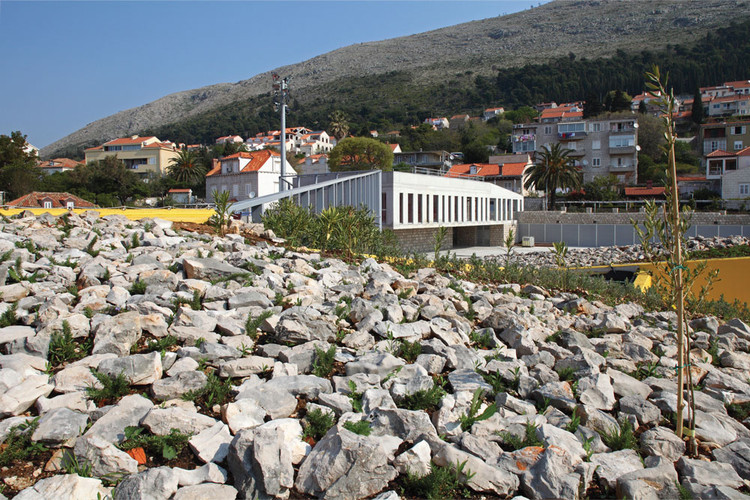
-
Architects: Ivanisin & Kabashi Arhitekti
- Area: 23922 m²
- Year: 2009
-
Photographs:Danko Vucinovic & Roel Backaert
Text description provided by the architects. The underground car park for 750 cars on four levels is topped by sports enclosures, a café-bar and a terrace overlooking the old city of Dubrovnik and the sea beyond. It was completed upon the first public-private partnership contract in the Republic of Croatia. The primary school gave over the decayed sports courts to the municipality that loaned the land to the investment group. As compensation to the school, the investment group had to build sports courts on the car park's roof and a sports hall on a neighboring land lot. Located in the immediate vicinity of the historical city core, the car park has relieved the area of the vehicular traffic that is particularly heavy during the summer months.




























